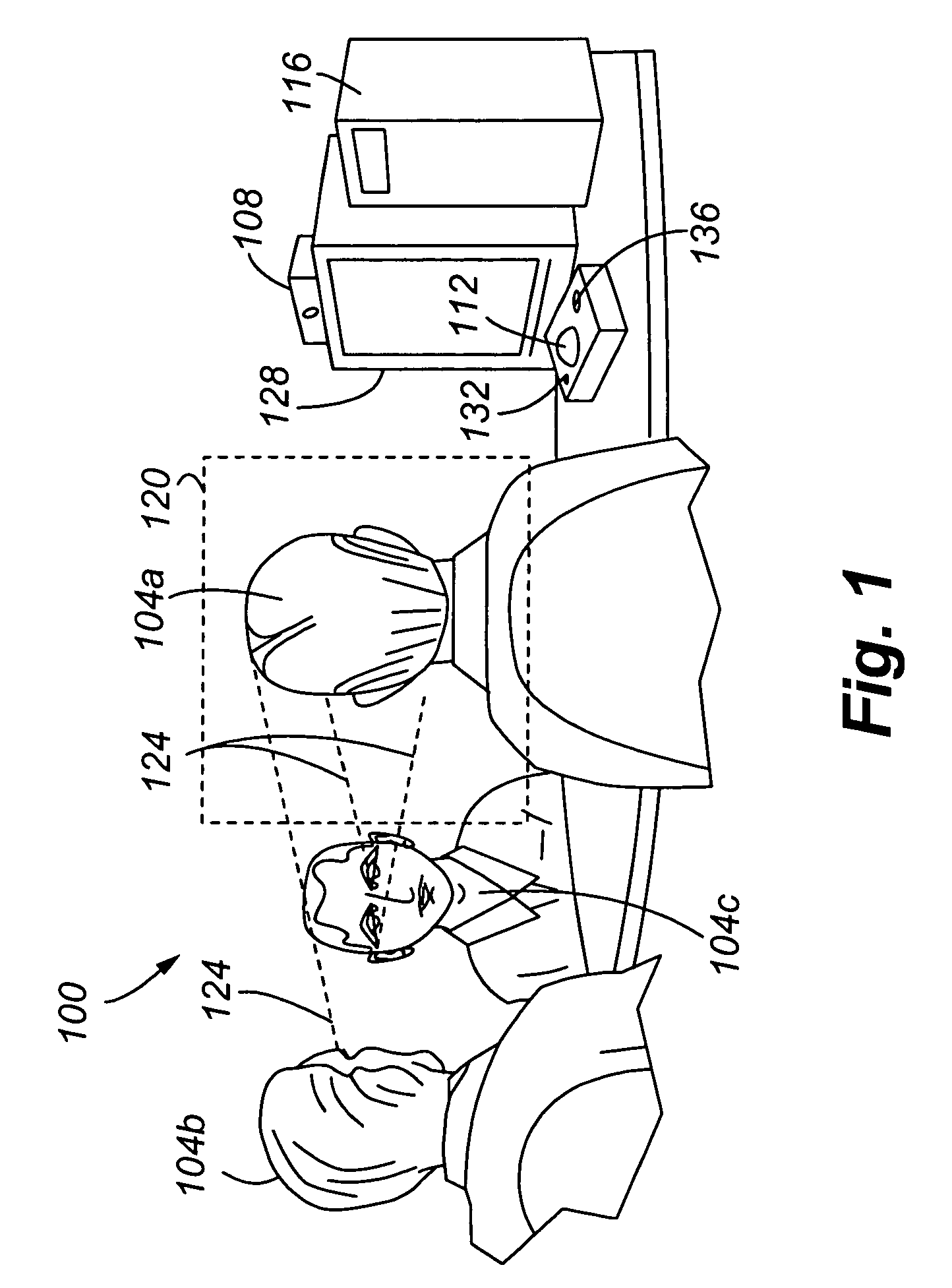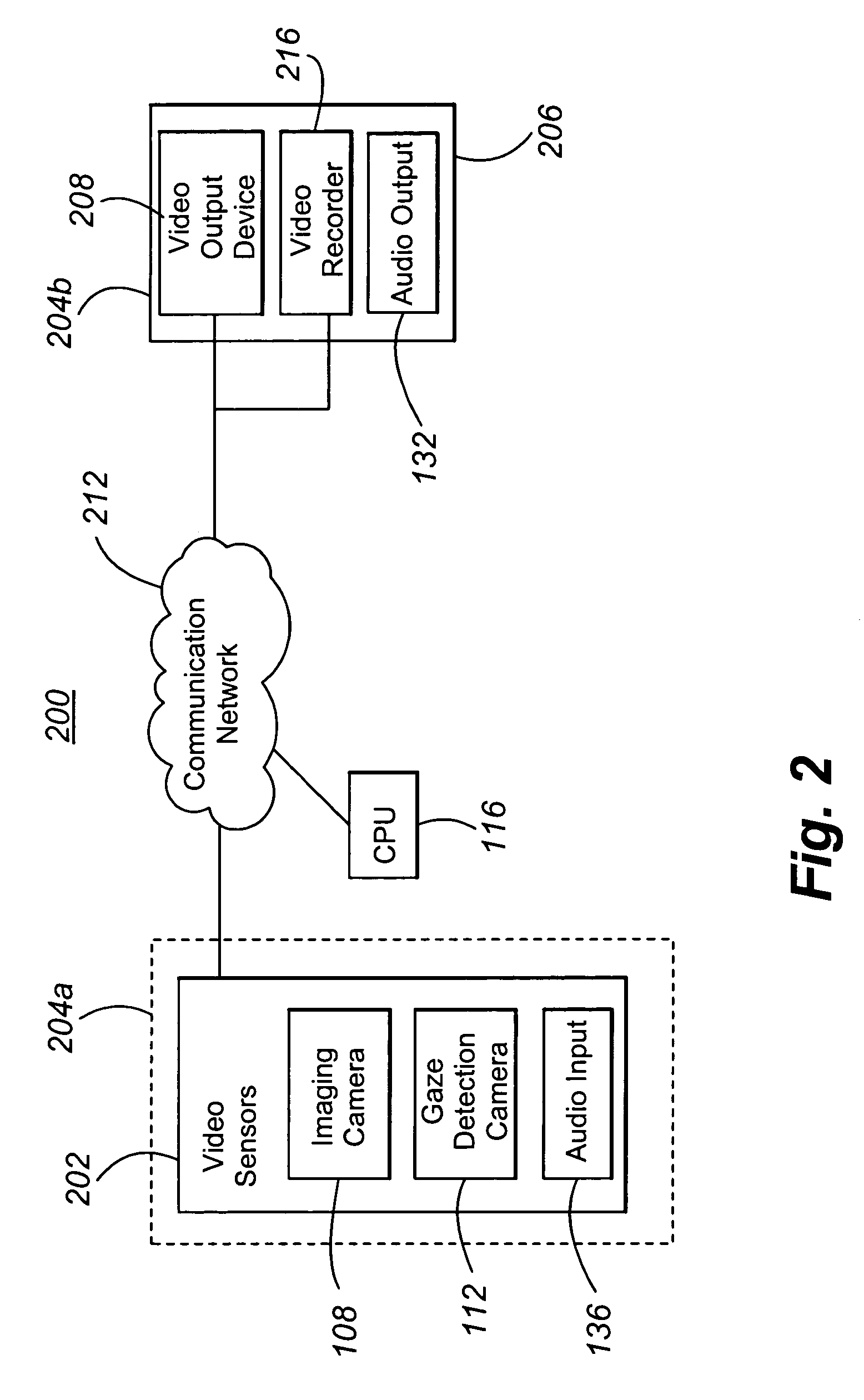Using gaze detection to determine an area of interest within a scene
a technology applied in the field of scene and gaze detection, can solve the problems of camera control system thrashing, system operation is difficult to be entirely satisfactory, and the remote operation of the system is difficul
- Summary
- Abstract
- Description
- Claims
- Application Information
AI Technical Summary
Benefits of technology
Problems solved by technology
Method used
Image
Examples
Embodiment Construction
[0016]With reference now to FIG. 1, an example of a scene from which video information can be obtained is illustrated. As can be appreciated by one of skill in the art after consideration of the present disclosure, example contexts of a system in accordance with embodiments of the present invention include video conferencing and video surveillance. In general, the scene is of or corresponds to a first location 100 at which a number of persons 104 may be located. In addition, the first location generally includes components of a video endpoint 204 (see FIG. 2) or 304 (see FIG. 3), as will be described in greater detail elsewhere herein. Such components may include an imaging camera 108 and a gaze detection camera or device 112. The imaging camera 108 and gaze detection device 112 may further be associated with a central processing unit (CPU) 116.
[0017]In operation, the gaze detection device 112 obtains information regarding the direction of the gaze or line of sight of the various pe...
PUM
 Login to View More
Login to View More Abstract
Description
Claims
Application Information
 Login to View More
Login to View More - R&D
- Intellectual Property
- Life Sciences
- Materials
- Tech Scout
- Unparalleled Data Quality
- Higher Quality Content
- 60% Fewer Hallucinations
Browse by: Latest US Patents, China's latest patents, Technical Efficacy Thesaurus, Application Domain, Technology Topic, Popular Technical Reports.
© 2025 PatSnap. All rights reserved.Legal|Privacy policy|Modern Slavery Act Transparency Statement|Sitemap|About US| Contact US: help@patsnap.com



